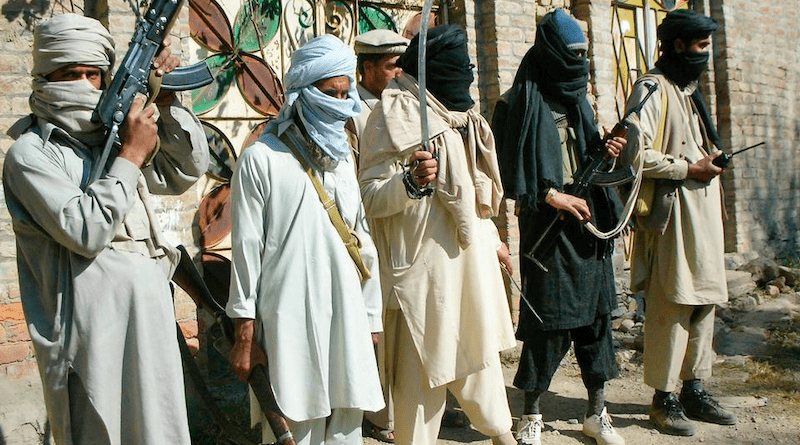Pakistan: Understanding TTP’s Modus Operandi – OpEd
Tehreek-e-Taliban Pakistan (TTP) has been a constant challenge for the security agencies of Pakistan, since its inception.
The state of Pakistan first initiated peace talks with insurgents in May 2004 in South Waziristan and inked an agreement with Nek Muhammad Wazir the former Mujahedeen commander in Shakai. The agreement was that Nek Muhammad would expel foreign fighters from South Waziristan in return the Pakistani army would stop military operations and withdraw troops from the region. However, the agreement only lasted for 50 days before being violated by insurgents and Nek Muhammad utilized the truce with the Pakistani state to further intensify the presence of trained foreign fighters in the region. The second major peace agreement was signed in February 2005 in Sararogha famously recalled as Sararogha Peace agreement. The government entered into a peace agreement with the hope of containing further Taliban expansion.
Another peace agreement was signed with the former chief of TTP Baitullah Mehsud in 2006 under the supervision of Governor K.P Ali Jan Orakzai, TTP started violating the terms of the agreement within a few weeks’ time. Additionally, one more peace agreement was signed in 2008 with the TTP Swat chapter to end the hostilities. Following a series of meetings and discussions between Taliban representatives and the Khyber Pakhtunkhwa government both in the Swat Valley and in Peshawar, on May 21, 2008, the two sides reached a 16-point agreement to bring an end to violence and restore peace to the valley but it was bound to fail.
It is important to note that TTP has a history of breaking peace agreements. When they get weak they try to negotiate some sort of settlement and then use this window of opportunity to regroup, restructure, relocate, and rearm to launch further attacks on security forces and citizens of Pakistan. They did a replica with Pakistan when they pretended to engage in talks but in reality, they needed that time to relocate their fighters and reorganize, after the takeover of Afghanistan by the Taliban in August 2021.
On Monday, the army chief said, “Pakistan would not seek talks with the banned Tehreek-e-Taliban Pakistan (TTP)’’ in a major policy statement that would put pressure on the Afghan Taliban to take action against the terrorist safe havens. It is pertinent to note that after several attempts in the past now, the security agencies have given up on the idea of having talks with the TTP and are looking for potential solutions to end this menace which is lingering for almost two decades.
The current regime of the Taliban in Afghanistan has a deep-rooted ideological affiliation with TTP because of so many factors. Firstly, TTP pledges allegiance to the emir of the Taliban in Afghanistan and wants a replica of the Islamic Emirate in the former tribal belt of Pakistan. Secondly, they fought together against the Soviets in the Afghan jihad from 1979 to 1989. Lastly, they have tribal affiliations, they speak the same language, same culture, same religious sect and they intermarry into each other tribes, so it is safe to say that Afghan Taliban TTA and Pakistani Taliban TTP are cousins and are the two sides of a same coin. TTP occupies no physical territory in Pakistan currently and they are based out of Afghanistan.
However, they have a good amount of sympathy in the former tribal belt of Pakistan which is concerning. On top of that, TTP has now established links with Baloch insurgents also and they have intensified attacks on security forces in Baluchistan in the last year. Interestingly, the TTP and Baloch insurgents developing nexus arise suspicions of Indian involvement. India has a history of supporting Non-State actors in Pakistan and using those proxies as a geo-political tool to further their hawkish foreign policy goals.
Moreover, TTP under the leadership of Nur Wali Mehsud has reformed its organizational structures after the takeover of Afghanistan by the Taliban. TTP has set up different “Wilayas’’ provinces which mean areas of operations under different “Emirs’’ commanders. They have changed their operational approach and now they most of the time target military and law enforcement agencies personnel in a deliberate approach to draw a wedge between public and security agencies. According to some experts of the Afghan-Pak region, TTP has approximately recruited 2500 to 6000 hardcore fighters based out of Afghanistan, mostly confined in the Khost, Paktia, Logar, and Nangarhar provinces of Afghanistan which run across the Durand line.
It’s high time for both the political and military leadership to come to terms on the issue of TTP specifically and on various terrorist threats generally to formulate clear policy guidelines with implementation time frame. As a native of the region where TTP used to operate, I can safely say that TTP has nothing to do with Islam neither they have an iota of understanding of the Sharia law. The majority of the founding fathers of TTP were ex-Mujahedeen commanders who after the Jihad in Afghanistan set up their private militias in the former tribal belt to make their fortunes. Some local criminals also joined them and became Taliban overnight, just to continue their criminal activities of cultivating hemp, kidnapping wealthy and influential people, taking extortion money from businessmen, smuggling weapons, drugs, and the list goes on. To conclude, TTP is a criminal syndicate and must be dealt with the way the state deals with criminals without ifs and buts.

